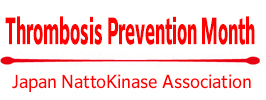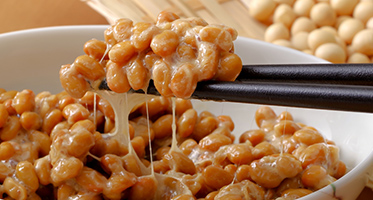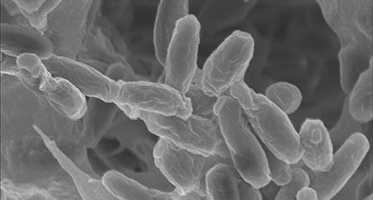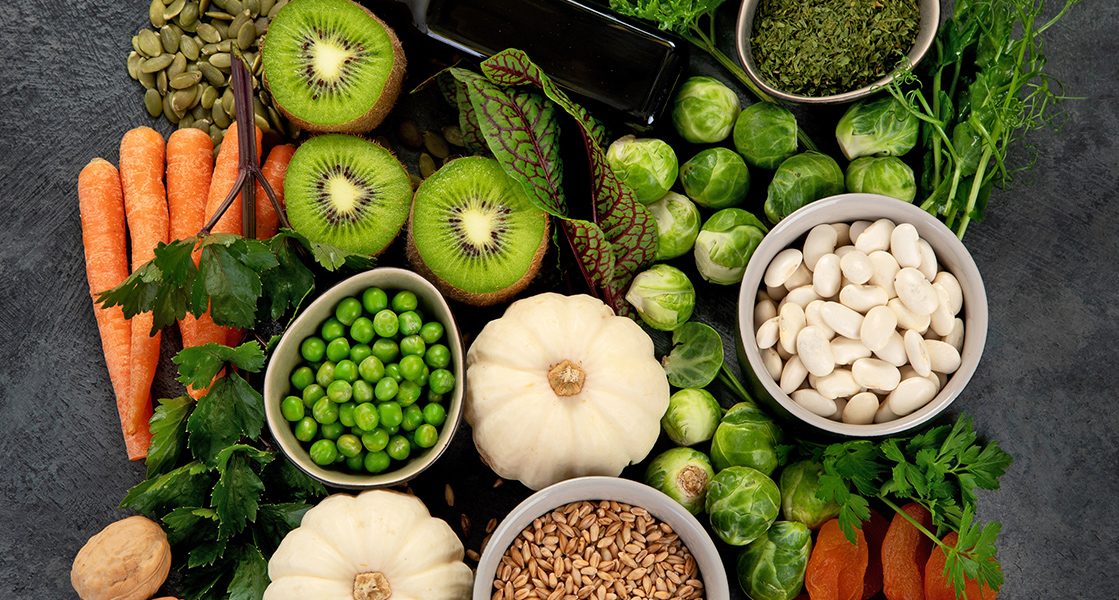
Thrombosis
Thrombosis Prevention Day
The death rate from thrombosis peaks in Winter!
Beware of clogged blood vessels.
Deaths from cerebral and myocardial infarction in winter
about 295 people per day
*Calculated from Handbook of Health and Welfare Statistics, Ministry of Health, Labor and Welfare (the number of deaths between December and February 2022).
The highest number of deaths from thrombosis occur in winter. Heat Shock causes blood vessels to constrict and makes the blood clots easier to clog, therefore people with thick blood are at particularly high risk of developing the disease.
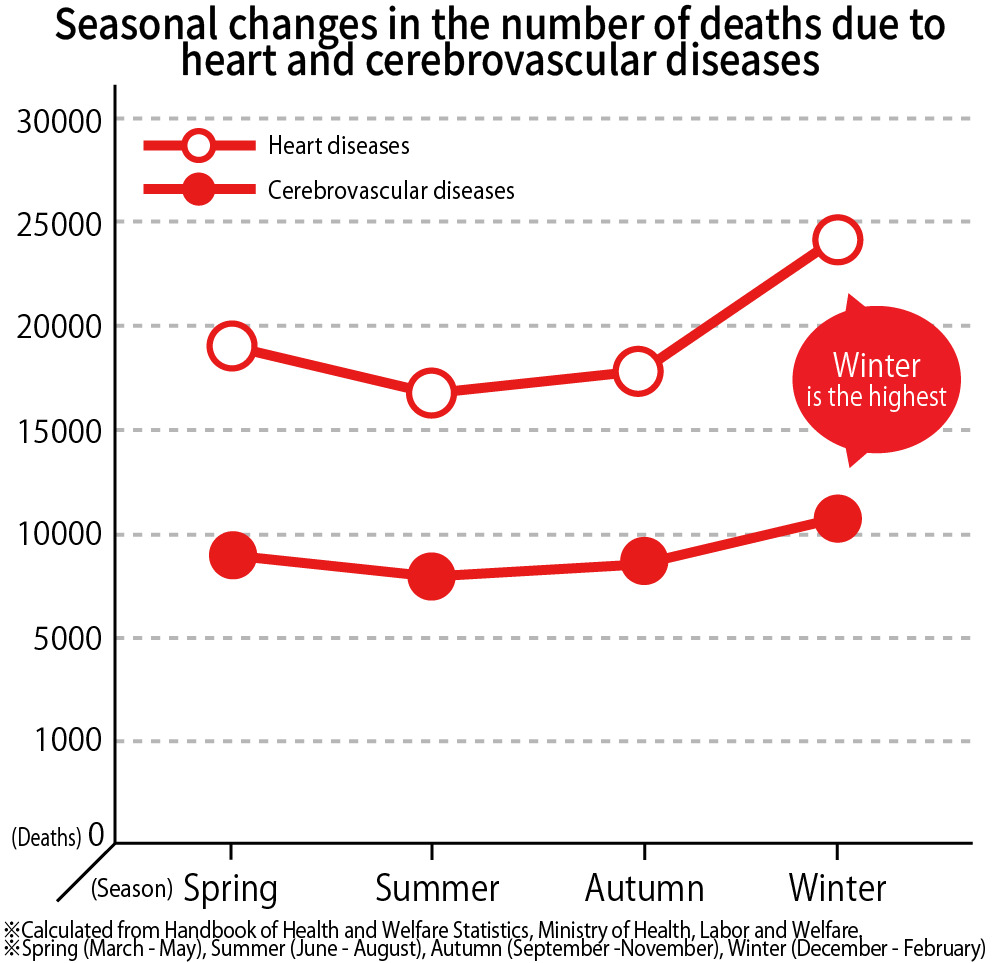
Be careful of changes in blood pressure due to differences in temperature

Takafumi Hamaoka[Professor / Doctor / Ph.D.]
Professor of Tokyo Medical University, Department of Sports Medicine for Health Promotion
Completed the Graduate School of Medicine of Tokyo Medical University.
Received the 1st European College of Sports Science (ECSS) Young Investigators Award (ECSS YIA) in 1996, among others. His research focuses on the adaptation of muscle metabolism on different environments and physical activity levels. He also examines the effects of various supplements. He has been studying the effects of Nattokinase on the coagulation-fibrinolytic system during dehydration as a new theme. As one of his habits, he finished the race in 1985 Ironman World Championship.
Blood pressure rises and drops due to temperature differences...
It is important to take care against Heat Shock in winter!
Heat Shock occurs when a sudden change in temperature causes a large fluctuation in blood pressure. When taking a bath in winter, taking off clothes causes the body surface temperature to drop and blood pressure to rise sharply, which can trigger a myocardial or cerebral infarction. There are many dangers caused by the difference in temperature in the house. Please be careful of sudden temperature changes by warming the entire house, and try to review your lifestyle.
- ●Spots where you should be careful of temperature differences
- □ Dressing room
- □ Shower room
- □ Bathroom
- □ Balcony
- □ Entrance
Prevent blood clots with Nattokinase!
Nattokinase is a thrombolytic ingredient that dissolves only blood clots.
Japanese tradional food, “Natto” has many ingredients that are good for your body. Nattokinase is effective in preventing blood clots. Nattokinase is a clot-dissolving ingredient contained in the sticky part of natto. It works directly on the main component of a blood clot called fibrin and breaks it down (dissolves it). In addition, it helps dissolve and prevent blood clots by promoting the function of thrombolytic enzymes, which are naturally present in the human body. Nattokinase is tasteless and odorless, therefore it may be easier to take even for those who do not like natto.
Effects of Nattokinase
(Nattokinase vs. Natto)
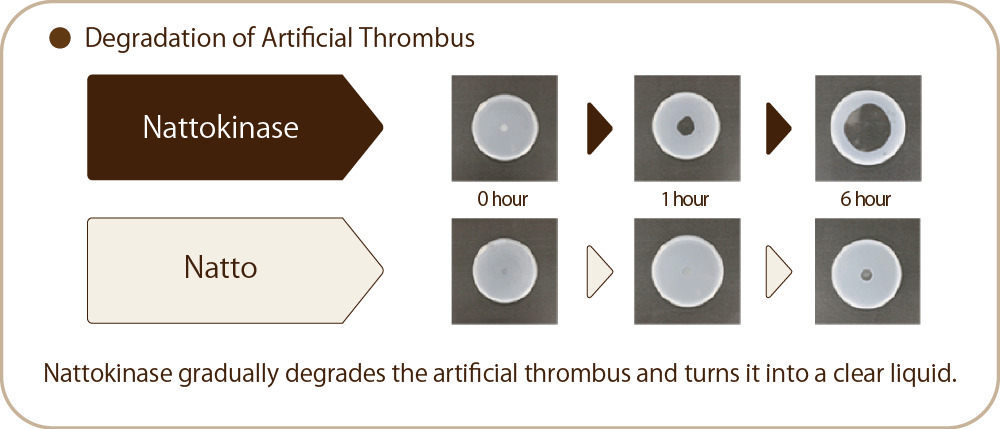
People with Warfarin can also take Nattokinase safely.
People who are prescribed warfarin are advised by their doctors to refrain from eating natto, but they can safely take “Nattokinase” because vitamin K2, a blood-clotting component, is removed from it. In addition to its thrombolytic effect, “Nattokinase” has been confirmed to lower blood pressure. It is expected to play an important role in preventing and improving hypertension. It has also been reported to promote blood flow and relieve shoulder aches.

Voices from Thrombosis Experiences
Thrombosis comes one day unexpectedly
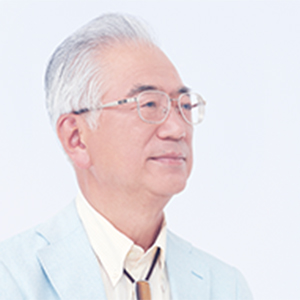
Early morning jogging for health,
may lose that health.
Takeshi Komizo, acute myocardial infarction at age 64
In the winter morning, it was the moment I went out on the balcony with the laundry.
Yuko Houtoku, cerebral infarction at age 36


I think it is good to prevent thrombosis before it occurs.
Yasushi Tachibana, cerebral infarction at age 47
LET’S START WITH WHAT WE CAN DO.
